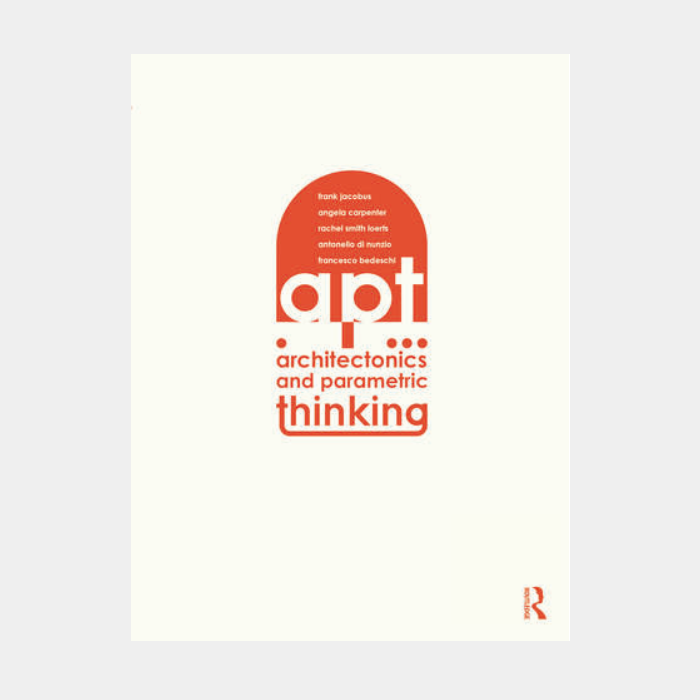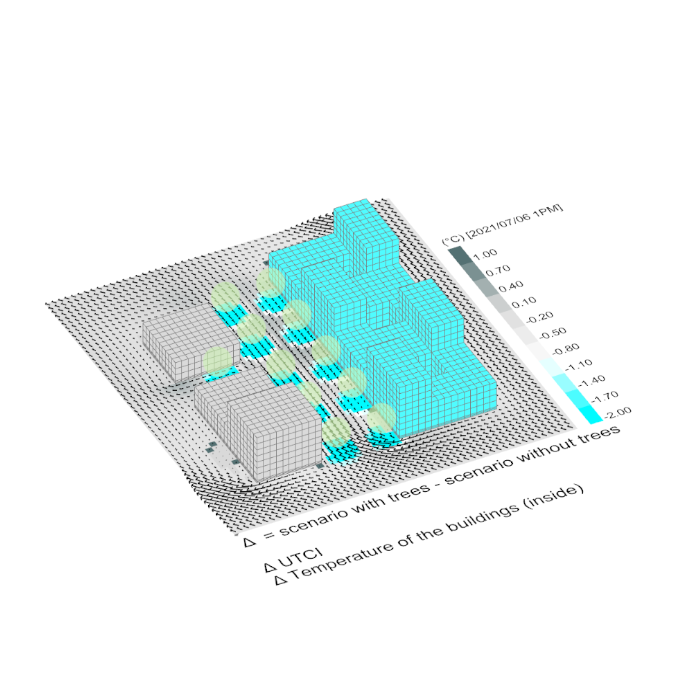Architectonics and Parametric Thinking: Computational Modeling for Beginning Design
Type: Book
Details: July 12, 2023 by Routledge
Role: co-author
This book is an approachable guide for students and professionals to learn parametric modeling through the lens of architectonics, allowing readers to pair fundamental ideas about architecture with parametric thinking. Architectonics and Parametric Thinking begins by clearly positioning the potentials of parametric design through a series of chapters written by leaders in their respective industries. This helps to situate the vast potential of parametric softwares, allowing the reader to understand the full range of what is made possible by working computationally. Following this theoretical introduction, the book presents a manual that walks readers through the step-by-step construction of parametric modeling scripts built through an architectonic lens using clear, compelling diagrams. Each of these diagrams provide textual accompaniment that describes how each new portion of the script is transforming the algorithm as a whole, as well as diagrams that show the physical transformation that is taking place as a result of the script’s evolution. Parametric modeling is radically transforming the design disciplines and will become the primary way designer’s generate new products moving forward. Written and expertly designed for architecture students and professionals, this book provides an interactive approach to teaching the basics of parametric thinking in relation to architecture and design.
Why Coupling MicroClimate and Buildings in Design for Climate Change
Type: Conference paper
Details: September 2021, Colloqui.AT.e 2021
Role: co-author
Controlling outdoor microclimates and building energy is an increasing concern. As climate changes fastly, it leads to warmer seasons threatening human thermal comfort and causing over-heating in indoor environments, consequently increasing cooling energy consumption. It is known that microclimates have a significant effect on both outdoor and indoor comfort. Existing literature demonstrates how local microclimate depends on urban density, shape, and orientation of buildings and materials. However, little research focuses on how outdoor and indoor can cooperate to affect outdoor and indoor positively. With cities including new types of envelope materials, complex buildings shapes, and nature- based solutions, this stream of research needs to expand and be digitally supported. By show- casing a series of research cases developed by the authors, this paper presents insights into the interconnected nature of outdoor and indoor via coupled thermal simulations– capabilities and limitations for implementing workflows that couple indoor and outdoor are discussed.
Energy and environmental analysis of urban environment: methodology and application of an integrated approach
Type: Conference paper
Details: October 2019, IOP Publishing
Role: co-author
The new vision of Smart Cities drives policies regarding sustainability of urban environment in terms of reducing consumption, environmental impacts and improving energy efficiency and safety of building sector. The mutual interaction between buildings and the surrounding built environment can affect all these fields. In particular, the paper investigates this interaction in order to analyse the energy behaviour of buildings at urban scale and the effect on the outdoor comfort. To reach this goal a multi-level and multi-purpose model was developed based on a synergic and integrated bottom-up approach for both energy efficiency and outdoor comfort analysis. The energy analysis is based on the identification of reference buildings with known energy performances, defined sing information available at Public Authorities, statistical studies and data from field surveys. A multi-level parametric approach used for the outdoor comfort analysis allows to identify the Universal Thermal Climate Index (UTCI) and the related stress level of the district starting from the environmental data available at rural station. The model allows the estimation of the current energy and environmental behavior of the built environment and identifies possible renovation scenarios.
Outdoor Comfort: the ENVI-BUG tool to evaluate PMV values point by point
Type: Conference paper
Details: February 2015, bu,press
Role: co-author
Studies on Outdoor Comfort in urban open spaces adopt several tools and software to simulate a microclimate model, energy performance and the fluid-dynamics of winds. The output data, therefore, of these software solutions, e.g. temperature, wind velocity, relative humidity, should be the input data to evaluate the comfort indexes. In the present paper, we describe ENVIBUG, an ENVI-met algorithmic app developed by Grasshopper, that uses the LadyBug method to rapidly calculate the distribution of local PMV.



